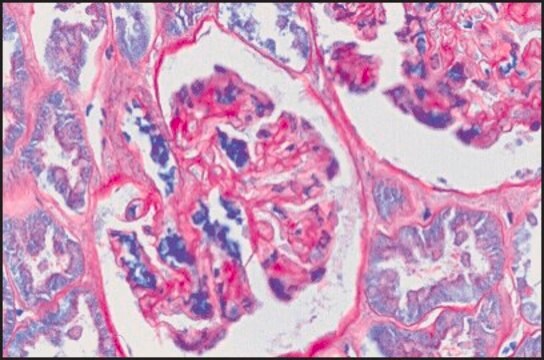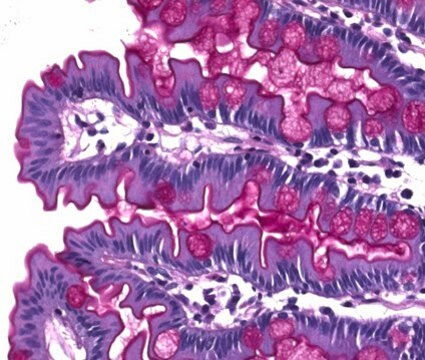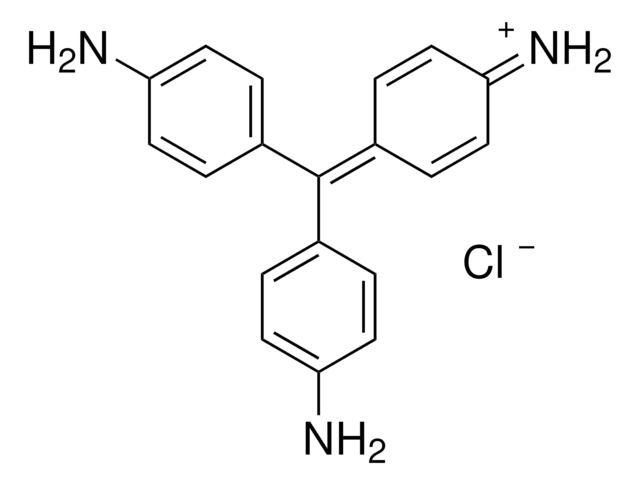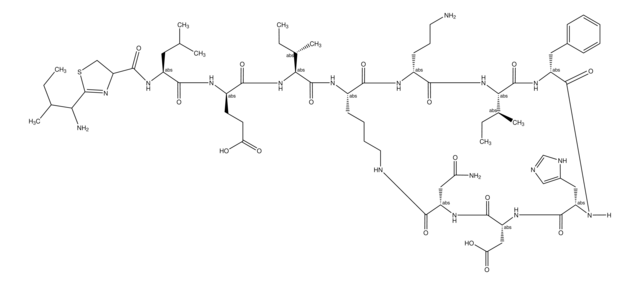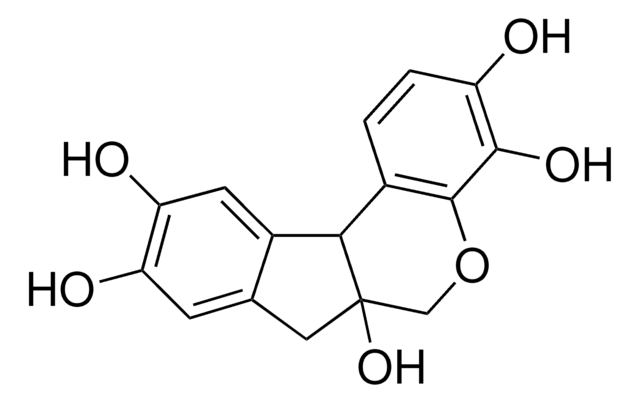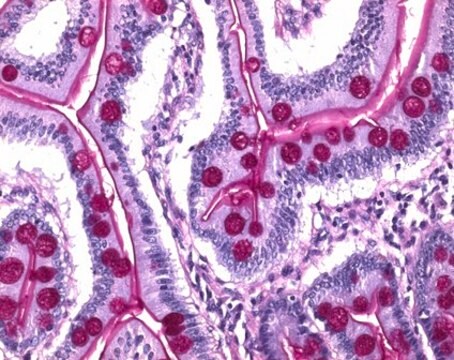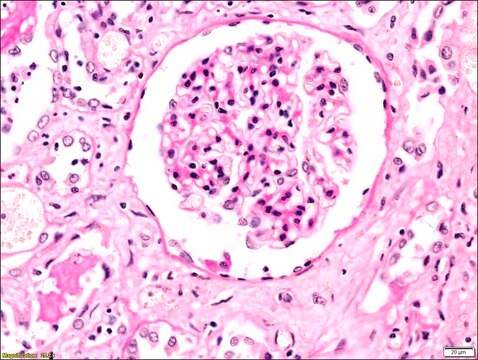S5133
Schiff′ fuchsin-sulfite reagent
liquid
Sinonimo/i:
Schiff reagent
About This Item
Prodotti consigliati
product name
Schiff′ fuchsin-sulfite reagent, suitable for detection of glycoproteins
Saggio
3-5 mM iodine (I) basis (titration)
Livello qualitativo
Forma fisica
liquid
tecniche
microbe id | staining: suitable
Colore
colorless
Solubilità
water: soluble
Densità
0.990 g/cm3
Compatibilità
suitable for detection of glycoproteins
applicazioni
diagnostic assay manufacturing
hematology
histology
Temperatura di conservazione
2-8°C
Descrizione generale
Applicazioni
- in periodic acid-Schiff (PAS) staining to determine goblet cells and salivary glycopreoteins like mucins
- to stain ovaries and testis
- to stain tomato and Medicago primary roots
- to stain undifferentiated sarcomas (USARCs)
Nota sulla preparazione
Avvertenze
Danger
Indicazioni di pericolo
Consigli di prudenza
Classi di pericolo
Carc. 1B - Met. Corr. 1
Codice della classe di stoccaggio
6.1D - Non-combustible acute toxic Cat.3 / toxic hazardous materials or hazardous materials causing chronic effects
Classe di pericolosità dell'acqua (WGK)
WGK 3
Punto d’infiammabilità (°F)
Not applicable
Punto d’infiammabilità (°C)
Not applicable
Dispositivi di protezione individuale
Eyeshields, Gloves, multi-purpose combination respirator cartridge (US)
Scegli una delle versioni più recenti:
Possiedi già questo prodotto?
I documenti relativi ai prodotti acquistati recentemente sono disponibili nell’Archivio dei documenti.
I clienti hanno visto anche
by Enzyme-Assisted Extraction
Articoli
Nuclear magnetic resonance (NMR) spectroscopy measures the extent to which a glycan or other molecule distorts a magnetic field.
Il team dei nostri ricercatori vanta grande esperienza in tutte le aree della ricerca quali Life Science, scienza dei materiali, sintesi chimica, cromatografia, discipline analitiche, ecc..
Contatta l'Assistenza Tecnica.